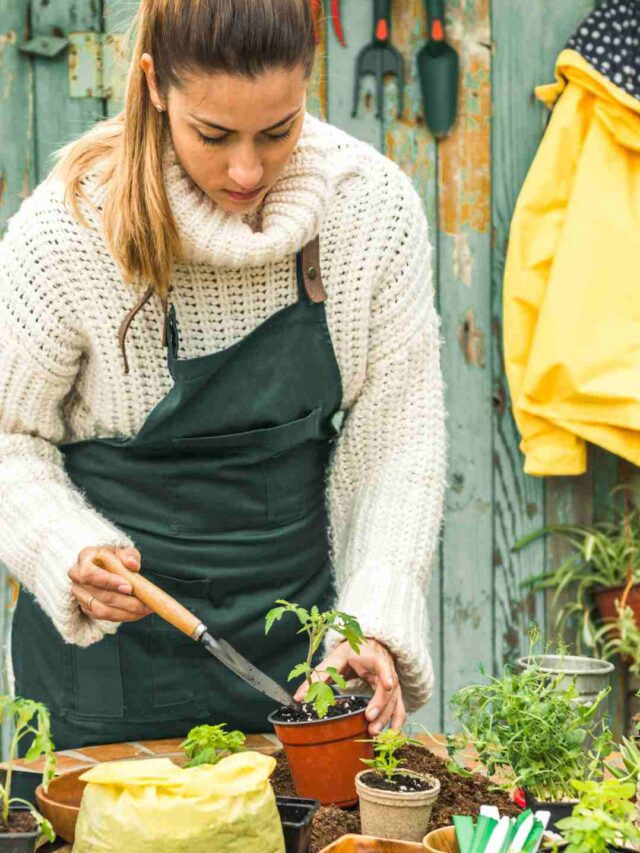How Smart Technologies Help In Crop Production
Farming is becoming more populair and the drive for innovation is much needed. Check out how Smart Technologies help in Crop Production.

Farming is becoming fashionable, in large part because of its growing profitability. And innovations are making their work much more efficient. For example, farmers can get plant id to identify any type of plant. And this is a small part of what modern technology offers.
According to the UN, by 2050 the world’s population is expected to reach 9.7 billion. And humanity will have no choice but to learn how to farm more efficiently to solve the global food problem. There is no way to deal with this by ignoring modern technology.
However, innovation in agriculture is already commonplace. Thanks to the industrial revolution, farmers have minimized the use of manual labor tools and are now adopting high-tech solutions to increase the efficiency of land cultivation. In addition to IoT sensors, artificial intelligence, and machine learning systems, big data and blockchain are being used. The number of mobile applications for the agricultural sector is growing. There are several examples of how such technologies can help crop production, not in some distant future, but today.
Increase Rice Yields with the Internet of Things
In Central Java, Indonesia, Atilze was able to increase rice yields by 30-50% and save up to 50% water through precision farming. This is the name of the approach in which modern technologies help manage soil productivity: global positioning, yield estimation, remote sensing, the Internet of Things, and others.
The Atilze company has installed smart agricultural sensors that measure soil moisture and acidity, as well as ambient air temperature and humidity. This data allows for better conditions for cultivating rice, which is actually grown in standing water. Farmers are now harvesting higher yields of the crop without increasing the area of the fields.
Control the production and supply of sauces with blockchain
Barilla is the world’s largest pasta manufacturer, owning 45 percent of the Italian and 35 percent of the U.S. markets. The company has joined forces with IBM to better control the production and delivery cycles of its pasta and pesto sauce. Pesto has a special QR code that allows the Italian manufacturer to track every detail. From growing, harvesting in the field, to transportation, storage, quality control, production, and delivery directly to customers. IBM provided Barilla with a blockchain platform that processes the scan results and stores them as a continuous chain of data. This helps retailers and end consumers get reliable information about the origin of a product and be assured of its high quality.
Identify weeds with artificial intelligence and machine learning
Bayer is known as a pharmaceutical company. Today, it is a major concern with many divisions, including manufacturers of crop protection products and pest control.
A subsidiary of Bayer Digital Farming has developed an app that uses machine learning and artificial intelligence technologies to identify weeds. Farmers upload a photo of a weed to the app on their smartphone, and it compares the image to a cloud-based database of nearly 100,000 images. Farmers understand exactly what kind of weed they’re dealing with and can choose the most effective tools to control it. This helps protect crops and increase yields.
Reduce water consumption with IoT sensors
WaterBit, a developer of IoT soil moisture sensors, helped San Jose farmers manage irrigation systems – artificial irrigation of land that lacks moisture. Another company, PrecisionKing, has provided them with a system to monitor water consumption based on actual irrigation needs. More than 3,000 sensors transmit data to the cloud via AT&T’s cellular carrier network and help farmers reduce excessive water use and maintain the right soil moisture based on the crop that grows on it. As more farmers adopt these technologies, we can expect to see further advancements and innovations in the field of IoT development for agriculture, ultimately leading to more efficient and sustainable farming practices.
Using big data for precision farming
InVivo is a leading French agricultural group with 220 divisions and sales of up to 6.4 billion euros a year. Its subsidiary SMAG, a leading developer of information systems for the agribusiness sector, supplies its software solutions to 80% of farms and 50% of French retailers.
SMAG has already developed a large number of mobile applications to facilitate farmers’ daily work. A few years ago it consolidated the data collected in the process on a single digital platform. It stores satellite imagery and photos from drones, weather data, and information collected by soil moisture sensors – what we call big data.
Based on this platform, a sophisticated agronomic algorithm, Data Crop, works to help make more accurate farming decisions. For example, tracking crop progress throughout the year and predicting crop yields. The success of the SMAG project can be seen by the fact that Data Crop is now used to manage 80% of all agricultural land in France used for wheat cultivation.
The fact that the agricultural sector will have powerful incentives for development is confirmed by experts from one of the world’s leading news portals, Business Insider Intelligence. They believe that in 2023, the number of agricultural IoT sensors alone will be more than 12 million units.
FAQ
What technologies are currently used to improve crop production?
Technologies include precision agriculture tools, drones, satellite imaging, automated irrigation systems, and genetic engineering of crops.
How do precision agriculture technologies enhance crop production?
Precision agriculture uses GPS mapping, soil sampling, and data analytics to optimize field-level management regarding crop planting, watering, and harvesting.
What is the role of drones in crop production?
Drones are used for aerial surveys, monitoring crop health, precise pesticide application, and gathering data for crop analysis and management.
How does satellite imaging contribute to crop production?
Satellite imaging provides detailed insights into crop health, soil conditions, and water needs, enabling more informed agricultural decisions.
What are the benefits of automated irrigation systems in agriculture?
Automated irrigation systems improve water use efficiency, reduce labor costs, and provide optimal hydration conditions based on crop and soil requirements.
How has genetic engineering impacted crop production?
Genetic engineering has led to the development of crop varieties with improved yield, pest resistance, and adaptability to different environmental conditions.
What role does data analytics play in crop production?
Data analytics helps in processing agricultural data to predict crop yields, optimize resource use, and identify potential issues before they affect crops.
Can technology help in sustainable crop production?
Yes, technology like precision farming and water-efficient systems can help in reducing resource waste, thus promoting sustainable crop production.
How do soil health monitoring systems benefit crop production?
These systems provide real-time data on soil composition and health, guiding farmers in making informed decisions about fertilization and treatment.
What is the future of technology in crop production?
The future includes more advanced AI and machine learning for predictive agriculture, enhanced automation in farming processes, and breakthroughs in biotechnology for crop improvement.
How does the Internet of Things (IoT) technology assist in crop production?
IoT technology involves using sensors and network-connected devices to monitor and automate agricultural processes, enhancing efficiency and crop yield.
What impact do robotics have on crop production?
Robotics can automate labor-intensive tasks like planting, weeding, and harvesting, increasing efficiency and reducing the need for manual labor.
Can technology assist in pest control and crop protection?
Yes, technology like drone-based surveillance and AI-driven pest identification systems can help in early detection and precise treatment of pests and diseases.
How do vertical farming and hydroponics technologies contribute to crop production?
These technologies allow crop cultivation in controlled environments, maximizing space use and resource efficiency, and reducing dependency on soil and climate conditions.
What role does Artificial Intelligence (AI) play in advancing crop production?
AI aids in analyzing agricultural data, predicting crop outcomes, automating decision-making processes, and optimizing farm management practices.
How does technology contribute to soil conservation and crop production?
Technology such as soil moisture sensors and sustainable farming practices helps in preserving soil health, essential for long-term crop production sustainability.
Can technological advancements help in adapting to climate change for crop production?
Advanced technologies like climate modeling and genetically modified crops can help farmers adapt to changing climatic conditions and maintain crop yields.
What is the significance of agricultural drones in crop monitoring and management?
Agricultural drones provide high-resolution imagery for monitoring crop health, soil conditions, and irrigation needs, enabling precise farm management.
How do smartphone apps and mobile technology support farmers in crop production?
Mobile apps offer farmers easy access to weather forecasts, market trends, agricultural advice, and remote monitoring of crops and equipment.
What are the advancements in greenhouse technology for crop production?
Modern greenhouse technologies include automated climate control systems, LED lighting for enhanced plant growth, and hydroponic systems for efficient water and nutrient use.
Other related articles
Create more and better content
Check out the following resources and Grow!









